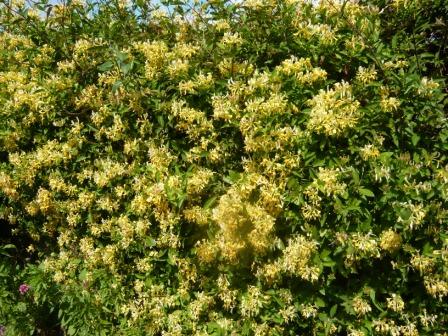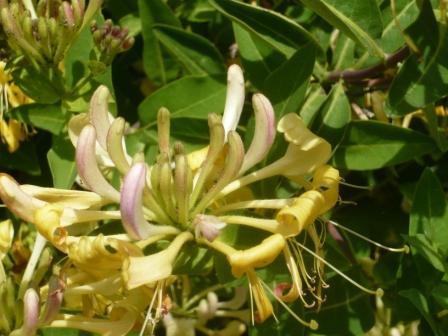Make it a Good Year
Some years are better than others for certain plants and crops. This year seems to be an excellent year for Honeysuckle and wherever I go I see and smell the wonderful blossom. Do not assume the same plants will perform the same next year. Apple trees some times crop every other year as though they have expended more energy than they intended (see below).
Unfortunately every year seems to be a good year for weeds and Dandilion Bitter Cress and Water Avens seems to love my garden. That could be down to my husbandry so I have looked at some tips that might help for next year.
A Good Year 2010
- Work done this year will help create a great year in 2010.
- Buds and framework stems on fruit trees and shrubs are growing and developing ‘as we speak’ . Treated well most plants will contribute to making next year a success.
- Select a number of feature plants you want to perform above average. I am going to focus on 5 in my garden. Then lavish extra care on them by providing space, support if needed, fertilizer and mulch.
- The feature plants will also get appropriate pruning that I will plan out beforehand rather than my ‘snip and go’ methods.
- You can’t do much about location or climatic conditions which will shape next year but you can prepare the environment. Tidy up to avoid disease spreading, weed and hoe to avoid weeds seeding, shelter from strong winds, plan watering through Autumn and winter if it is dry etc.
Apple Tree Good Years
- Apples are borne on the tips of shoots or on Spurs depending on the variety. For tip bearers leave short lateral shoots unpruned or you cut off Apple potential. When you prune you are trying to encourage the even growth of spurs or shoots. For Spurs shorten all lateral shoots to just 3-4 buds from its base and laterals that were pruned last year can be cut down to just one bud.
- Bramley’s Seedling, Blenheim Orange, Newton Wonder and Laxton Superb varieties naturally bear heavier crops one year than another. This can be modified in Spring before a heavy crop year by rubbing out half of the fruit buds from each spur leaving only 2 fruiting buds each.
- Summer prune by shortening excessive new wood to get energy into bud formation particularly on cordons, espaliers and ballerina types. Aim to get a balance of new wood and fruit buds by renewing old wood.
- Support low hanging branches in a Maypole manner from a central post and ropes.
Other Resources
Royal Horticultural Society RHS ‘Gardening for All’
National Council for Conservation of Plants and Gardens ‘Conservation through Cultivation.’
Garden Organic National Charity for Organic Gardening.
BBC Gardening

